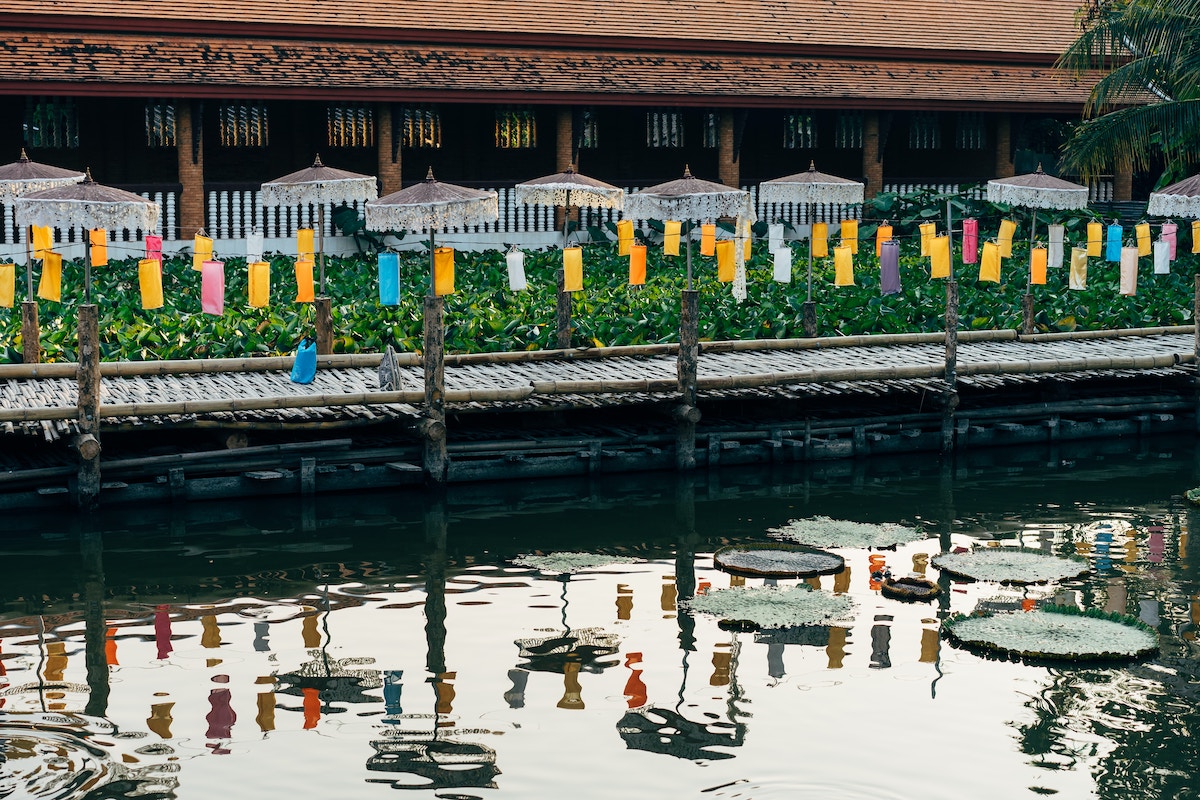
A Tour of the Forgotten Empire in Chiang Mai, Thailand
Skip to Section
For most travelers, the beautiful city of Chiang Mai in northern Thailand is the gateway to jungle trekking adventures in the nearby mountains. The city itself is rich in history and architecture.
In the center of Chiang Mai’s historic old town, you’ll find a square moat with ancient fortifications measuring about 1 km on each side—it’s the easiest way to navigate the area, and is the fulcrum of the city’s many festive parades and processions.

Photo by Markus Winkler on Unsplash
Chiang Mai’s 700-year-old defensive wall and moat were constructed against attacks by the neighboring Pagan Empire as well as Kublai Khan’s marauding Mongols. Today, only portions of the wall remain: the square defined by the ancient defenses is now an encircling patch of tranquil gardens and water where visitors and locals alike relax and cool off.
A Little About Chiang Mai’s History
The Pagan Empire arose in what today is called Myanmar (Burma) in the 12th century. It became a formidable power and started a program of expansion and conquest. The little empire of Chiang Mai was surrounded—to the west was the Pagan Empire, to the south the Siamese Empire, in the north were the Mongols, and to the east the Khmer Empire was on the rise.
Evolving from a village of Lawa people, the city was the capital of the Lanna Kingdom in the 12th century, and later was simply called the Kingdom of Chiang Mai. The name Chiang Mai means “New City.” Pressure from the larger bordering empires was constant; a Burmese invasion in the 15th century kept the empire subservient for 200 years until Chiang Mai voluntarily merged with the Siamese Empire centered in Bangkok. Royal authority of Chiang Mai was maintained and tax tribute was shared in the interests of defensive protection.
The Kingdom of Chiang Mai’s forested mountains provided a wealth of hardwood lumber, like teak. Chiang Mai also supplied soldiers to the central Kingdom in Bangkok. Existence as a vassal state to Siam was preferable to Burmese overlords; the language of the Lanna Kingdom is a dialect of the same Thai language and the cultures are similar.
Through the modern period, beginning with the British victory in a war with Burma in 1885, Chiang Mai was increasingly under western influence over the objections of Bangkok. The succession of Lanna Empire rulers lasted into the 20th century. The last Ruler of Chiang Mai was Prince Kaew Nawarat, who sat as leader from 1911 to 1939. The royal title was dissolved by Bangkok after the Prince’s death. Today’s descendents of the kingdom still carry the last name Na Chiangmai.
Chiang Mai separateness was heightened by geographic isolation—it is over 700 km from Bangkok. Until the 1920s, there was no proper road into the Empire, and you could only get to the city by riding elephants over jungle trails and along the course of rivers.

Photo by Tim Durgan on Unsplash
Seeing History in Chiang Mai
You can see traces of Chiang Mai’s empirical glory inside the old city. The White Elephant Gate was bombed in the Second World War by the Japanese, but the gateway is a faithful reconstruction of the original north entrance through the fortifications.
There are over 30 temples dating from Lanna days. They are a blend of architectural styles with many fine wooden carvings, nagas, and figures sheltered by gold filigreed pagodas. Wat Chiang Man is the oldest, constructed by King Mengrai at the time when the city became the Lanna capital. Though the temple is a ruin it still inspires reverence; it was originally the home of the Emerald Buddha which is now in Bangkok’s Grand Palace.
Wrapping Up
Have you had the chance to visit Chiang Mai? What was your experience? Share your stories and advice with the Frayed Passport community!
About the Author
Born in The Hague, Andrew Kolasinski arrived in Canada as a small child riding in the luggage rack of a DC-7. Since then he has felt at home anywhere. As the publisher and editor of Island Angler, Andrew spends half the year fishing for salmon and trout, and in the off-season he travels the world looking for a story.
Featured image via Unsplash.
Information published on this website and across our networks can change over time. Stories and recommendations reflect the subjective opinions of our writers. You should consult multiple sources to ensure you have the most current, safe, and correct details for your own research and plans.
Frayed Passport is a participant in the Amazon Associates Program, an affiliate advertising program designed to provide a means for sites to earn advertising fees by advertising and linking to Amazon.com. We also may share links to other affiliates and sponsors in articles across our website.




